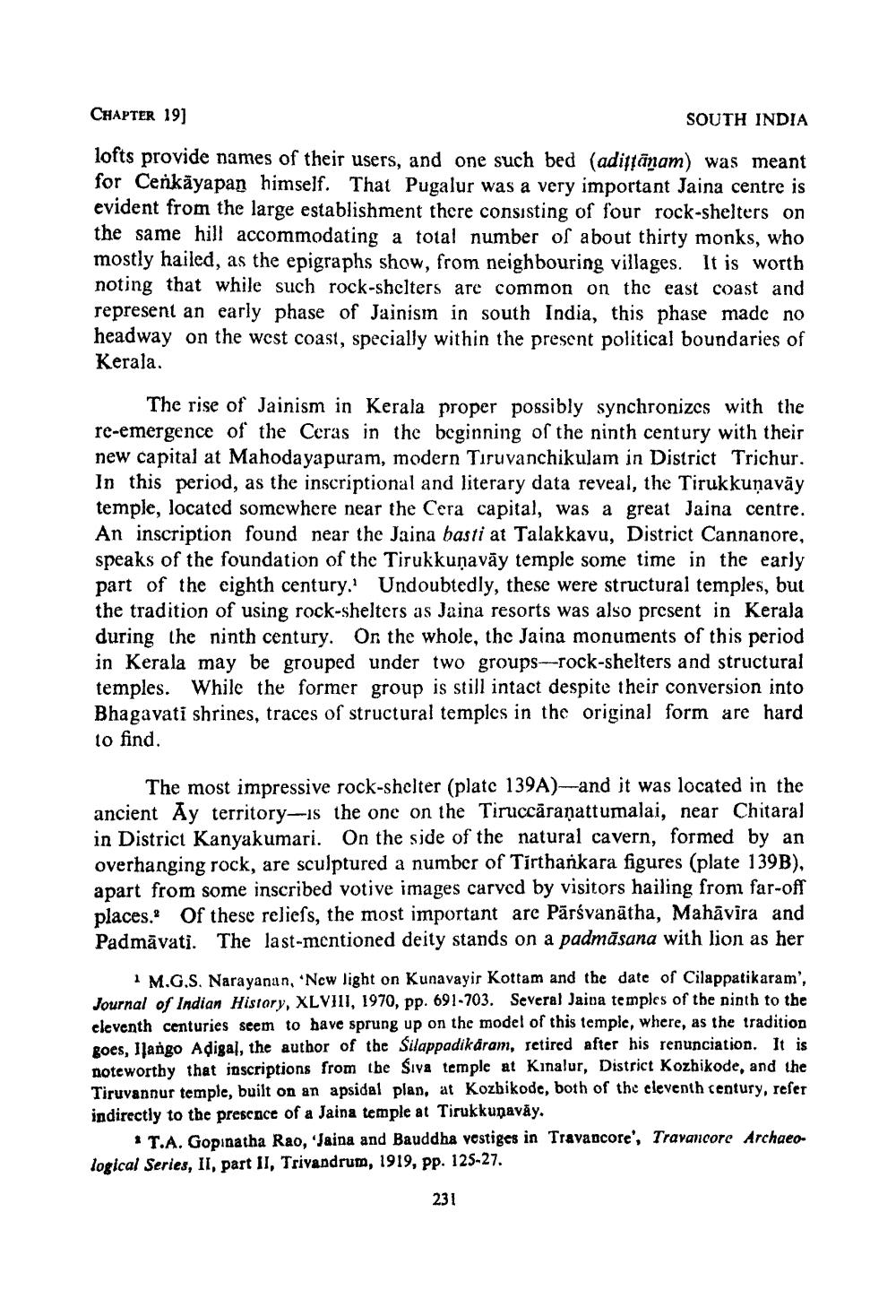________________
CHAPTER 19)
SOUTH INDIA
lofts provide names of their users, and one such bed (adiffānam) was meant for Cenkāyapan himself. That Pugalur was a very important Jaina centre is evident from the large establishment there consisting of four rock-shelters on the same hill accommodating a total number of about thirty monks, who mostly hailed, as the epigraphs show, from neighbouring villages. It is worth noting that while such rock-shelters are common on the east coast and represent an early phase of Jainism in south India, this phase made no headway on the west coast, specially within the present political boundaries of Kerala.
The rise of Jainism in Kerala proper possibly synchronizes with the re-emergence of the Ceras in the beginning of the ninth century with their new capital at Mahodayapuram, modern Tiruvanchikulam in District Trichur. In this period, as the inscriptional and literary data reveal, the Tirukkuņavāy temple, located somewhere near the Cera capital, was a great Jaina centre. An inscription found near the Jaina basti at Talakkavu, District Cannanore, speaks of the foundation of the Tirukkuņavāy temple some time in the early part of the eighth century. Undoubtedly, these were structural temples, but the tradition of using rock-shelters as Jaina resorts was also present in Kerala during the ninth century. On the whole, the Jaina monuments of this period in Kerala may be grouped under two groups--rock-shelters and structural temples. While the former group is still intact despite their conversion into Bhagavati shrines, traces of structural temples in the original form are hard to find.
The most impressive rock-shelter (plate 139A)-and it was located in the ancient Ay territory is the one on the Tiruccaranattumalai, near Chitaral in District Kanyakumari. On the side of the natural cavern, formed by an overhanging rock, are sculptured a number of Tirthankara figures (plate 139B), apart from some inscribed votive images carved by visitors hailing from far-off places. Of these reliefs, the most important are Pārsvanātha, Mahavira and Padmăvati. The last-mentioned deity stands on a padmāsana with lion as her
M.G.S. Narayanan, New light on Kunavayir Kottam and the date of Cilappatikaram', Journal of Indian History, XLVIII, 1970, pp. 691-703. Several Jaina temples of the ninth to the eleventh centuries seem to have sprung up on the model of this temple, where, as the tradition goes, llango Adigal, the author of the Silappadikdram, retired after his renunciation. It is noteworthy that inscriptions from the Siva temple at Kinalur, District Kozhikode, and the Tiruvannur temple, built on an apsidal plan, at Kozhikode, both of the eleventh century, refer indirectly to the presence of a Jaina temple at Tirukkunaväy.
T.A. Gopinatha Rao, Jaina and Bauddha vestiges in Travancore', Travancore Archaeological Series, II, part II, Trivandrum, 1919, pp. 125-27.
231




